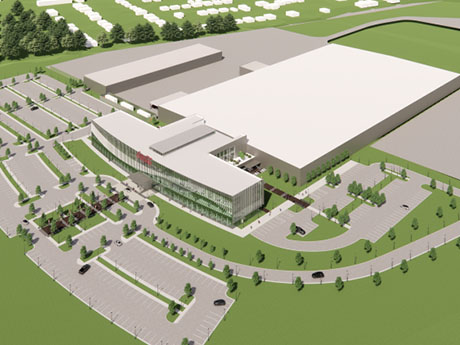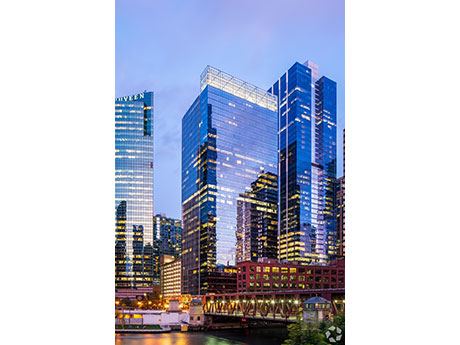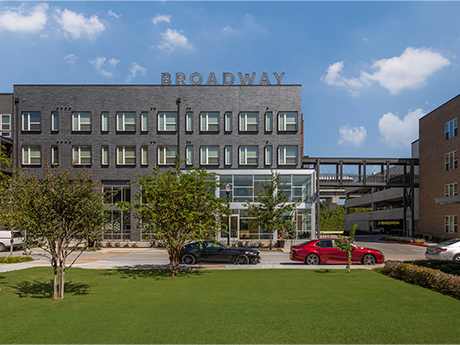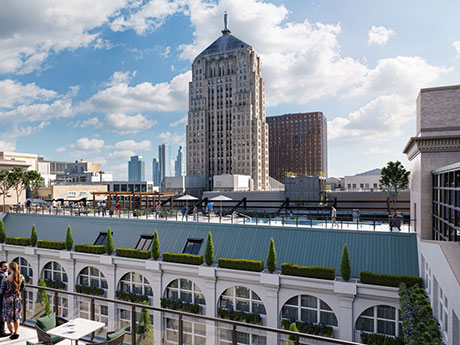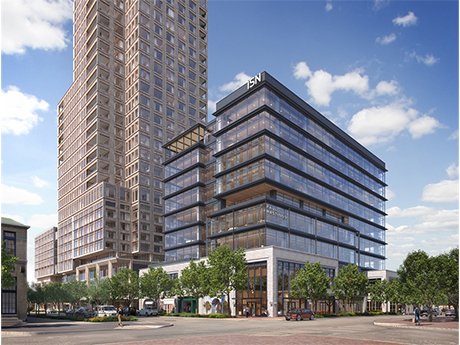Birmingham’s office market is holding its own with overall market occupancy at 82.6 percent as of fourth-quarter 2024. We saw a slower second half of the year, but that is to be expected during a presidential election year when companies often hit pause on significant real estate decisions. During the fourth quarter, Birmingham’s multi-tenant office market recorded negative absorption of 67,739 square feet, but that was a notable improvement from the negative 268,061 square feet recorded the previous quarter. Leasing activity for the quarter came in at 180,849 square feet, bringing the year-to-date total to just over 562,000 square feet — about 22 percent below the previous year’s pace. While definitely a slowdown, this performance is nothing out of step with the broader national trends. Signs of positive momentum The good news? Since the start of 2025, activity has picked up across the board. Tenants are back in the market touring space and rethinking their long-term office needs. Some are expanding, some are rightsizing to space that better fits how they work today and others are updating their office protocols to bring employees back in more regularly — all of which is driving movement in the market. In addition, several …
Market Reports
By Steven Bauer, Colliers The office towers that define Chicago’s landscape have unique histories and personalities, but not all are created equal in the eyes of the tenant. Buildings seeing the highest demand, classified even higher than Class A, are “trophy buildings” — buildings with high-quality finishes, newer and more efficient construction, and are often amenity rich with exclusive lounges, rooftop decks, fitness centers and private bars. It’s especially important in today’s market to distinguish between the two distinct building categories because while Chicago’s real estate market is a vibrant and complex one, there is more to the story than what you see in the headlines. While the overall vacancy rate in the Loop remains at a historic high above 25 percent, trophy space vacancy is under 10 percent, and demand continues to be robust. The story of flight to quality and flight to trophy assets has been told repeatedly since the COVID pandemic — complete with statistics that back the trend up. In the fourth quarter of 2024 alone, owners of trophy class buildings finalized anchor tenant renewals with Mayer Brown and PwC, both of whom kept roughly the same square footage as they had previously leased. With the …
By Jonathan Brown of JHP Architecture/Urban Design The essence of a thriving city lies in its diversity. Dynamic urban landscapes can achieve this effect by offering a robust mix of uses that cater to a wide range of people, keeping their streets and buildings lively and vibrant throughout the day and into the night. City administrators, architects and master planners have long sought the alchemical mixture for this success. However, zoning codes for various municipalities can often read like complex recipes: A cup of residential here, a few ounces of retail there, a pinch of municipal infrastructure all around, a dash of hidden parking and a sprinkling of community open space to really tie the flavors together! Successful placemaking is not simply the sum composition of all its parts; it requires thoughtful integration and balance. With today’s housing shortages, multifamily developments make sense, but integrating retail uses within those projects is challenging. This is despite the fact that many comprehensive plans and zoning codes mandate specific retail quotas, which may not be easily supported by the economics. Creating vibrant, engaging spaces requires more than just ticking boxes in the zoning code. Stakeholders want to avoid ending up with a …
— By Phil Brierley of JLL — The Salt Lake City office market continues to strengthen despite strong systemic headwinds. Last year was a banner year for leasing, with 4.8 million square feet of total leasing velocity. Silicon Slopes once again led all submarkets, representing 43 percent of all leasing. This was followed by the Greater CBD with 25 percent. Absorption was positive through the fourth quarter (for the second consecutive time) at 72,861 square feet, offsetting move-outs earlier in the year. Overall vacancy peaked in 2023 at 18.9 percent and is finally trending in the right direction. It finished the year at 18.6 percent. Subleasing is still a soft spot, especially in Silicon Slopes, with 300,000 square feet of new sublease space hitting the market in the fourth quarter of 2024 alone. Sales volumes rebounded after a dismal 2023, clocking in at $518 million in 2024. RCA notes this is close to the trailing 10-year average of $587 million. Much of that velocity was driven by user sales, including Salt Lake County’s acquisition of the Peace Coliseum, Canyons School District’s purchase of the eBay regional headquarters, the University of Utah’s acquisition of City Center downtown and Onset Financials’ acquisition …
Birmingham’s retail market continues to demonstrate resilience despite national economic challenges. With a vacancy rate of 3.8 percent — slightly below the national average of 4.1 percent — and rental rates holding steady at $13.13 per square foot, the city remains an attractive destination for both investors and tenants. However, rising interest rates have slowed development and softened transaction volumes, reshaping the investment landscape. Macroeconomic trends The intersection of economic pressures and shifting consumer habits is redefining Birmingham’s retail landscape. Across the nation, big-box retailer bankruptcies have contributed to negative net absorption of 346,200 square feet over the past year, and Birmingham has felt similar effects. The closure of Conn’s HomePlus, among other retailers, has contributed to this contraction. Despite these challenges, suburban retail demand remains robust. Homewood, Hoover and Alabaster are experiencing continued growth, and Crestwood Festival Shopping Center has added new tenants like Fun City Adventure and Armor Gym occupying 100,000 square feet. These trends highlight the increasing popularity of experiential retail, as consumers gravitate toward destinations that offer more than just traditional shopping. Development slows New retail construction has slowed significantly, with only 130,000 square feet delivered in the past year — well below historical averages. However, …
By Trina Sandschafer, AIA, Project Management Advisors Adaptation and reinvention are core parts of what makes American cities great, and Chicago is a prime example. Whether rebuilding, reimagining space for modern usage or creating new neighborhoods from formerly empty lots, the city has become known for its unique ability to bring new energy and life to formerly underutilized areas. Chicago knows how to reimagine the built environment and is leading the way with several transformative development strategies. Adaptive reuse: A well-tested Chicago tactic Chicago’s long history of adaptive reuse began with the pioneering residential loft developers. In the wake of nationwide manufacturing declines, these enterprising developers saw opportunity in the city’s largely vacant warehouses and manufacturing buildings. The success of these early loft conversions encouraged further reimagining of Chicago’s aging industrial and office stock into condominiums, apartments, offices, entertainment venues and hospitality spaces, which continue to this day. Now, adaptive reuse strategies are helping to increase the supply of housing and restore economic viability to communities dealing with the lingering impact of the pandemic on local businesses. Converting legacy structures to new and better uses is more environmentally sustainable and can be more cost-effective than demolishing older buildings and starting …
The “flight to quality” trend has been ensconced in the embattled office sector for much of the post-pandemic era, and it’s showing little sign of slowing in the major markets of Texas. With overall tenant demand depressed in the aftermath of COVID-19, opportunities existed in droves for office users to upgrade their spaces and move into buildings with desirable amenities and vibrant surrounding neighborhoods. In doing so, these companies sought to incentivize their employees to come back to the office. Simultaneously, owners that invested in wellness features and activation programs for their properties sought to gain a leg up on the competition — and make tough conversations with lenders a bit more palatable. Whether or not those initiatives worked as intended undoubtedly varies greatly from company to company and owner to owner. But after multiple years of stagnant occupancy and rent growth, the targeting of seemingly superior buildings and locations has come to represent more than just opportunistic decision-making by tenants. It’s a movement that has created visible delineation among winning and losing submarkets, a strategy that embodies basic financial prudence and perhaps a necessary evil — assuming that office usage is finally starting to rebound in a meaningful …
— By Jarrod Hunt of Colliers — Utah’s industrial real estate market continues to show resilience in 2025, supported by healthy tenant demand and an evolving mix of warehouse, flex and manufacturing product types. Leasing activity remains particularly strong in the 20,000- to 50,000-square-foot range, with a steady stream of local fulfillment and light manufacturing tenants driving mid-sized requirements across the Wasatch Front. Product Type and Demand Trends With enhanced industrial tracking now focused by building type, warehouse space stands out as the most active, though flex and light manufacturing buildings are seeing targeted interest. Mid-sized tenants seeking efficient, modern, move-in-ready space continue to account for most lease activity, favoring locations with convenient access to transportation corridors and workforce hubs. South Market Poised for a Breakout Year The South Utah County market is positioned for another active year, with a wave of new deliveries and groundbreakings happening this year. The Ritchie Group’s Global Logistics Center near the Spanish Fork Airport is the region’s largest project. It will feature 13 planned buildings comprising 3.3 million square feet, and early leasing interest is encouraging. While the Central market has led to early year absorption, momentum in the South is expected to build …
The Birmingham industrial market is poised for an increase in absorption as the apex of higher interest rates seem to be settling down, not to mention the post-election certainty that now favors business expansion. Corporate America is waking up and the clouds are clearing. For the past 24 months, the competitive set of investor-controlled warehouse space has been sitting on about 2 million square feet of inventory. About 550,000 square feet of that is still unleased speculative space in three different projects delivered at the back-end of the post-COVID development wave that did see about 700,000 square feet of absorption of new spec space before the music metaphorically stopped. Then came the 2023/2024 wave of the “new spec space,” a byproduct of the mentioned interest rates and COVID over-correction. Several second-generation spaces are now being marketed as companies vacated or downsized for various reasons. For example, discount retailer Dollar General is vacating an entire 307,000-square-foot warehouse. Broader, there have been two major announcements in Central Alabama for the closure of distribution centers, both as a result of retailers’ bankruptcies. JoAnn Fabric’s 700,000-square-foot distribution facility in Opelika at I-85 is now on the market as is the 1.2 million-square-foot former …
By Chris Bruzas, Berkadia After a particularly challenging and unpredictable 2024, marked by continued interest rate volatility and a persistent bid-ask spread differential that contributed to low transaction volume, the Indianapolis apartment market is showing promising signs of stabilization as we move into 2025. Yardi Matrix data highlights Indianapolis’ resilience, posting 2.7 percent year-over-year rent growth in November. This performance is especially noteworthy as it surpasses several popular Sun Belt markets, which have experienced declines, dipping into negative territory. The outlook for 2025 appears more balanced, with new supply moderating to approximately 3,500 units from 2024’s record-breaking 6,500+ deliveries. This timing aligns well with the market’s strong population growth, as Indianapolis expects to welcome 22,200 new residents in 2025, significantly exceeding the historical average of 12,800 annual net movers. Key factors of the population’s growth are due to the presence of reputable universities and colleges, such as Indiana University-Purdue University Indianapolis (IUPUI). Compared with other major metropolitan areas, Indianapolis offers a relatively low cost of living, making it an attractive destination for those looking to maximize their quality of life without the high expenses associated with larger cities. The region’s economic fundamentals remain strong, anchored by transformative projects including Eli …


